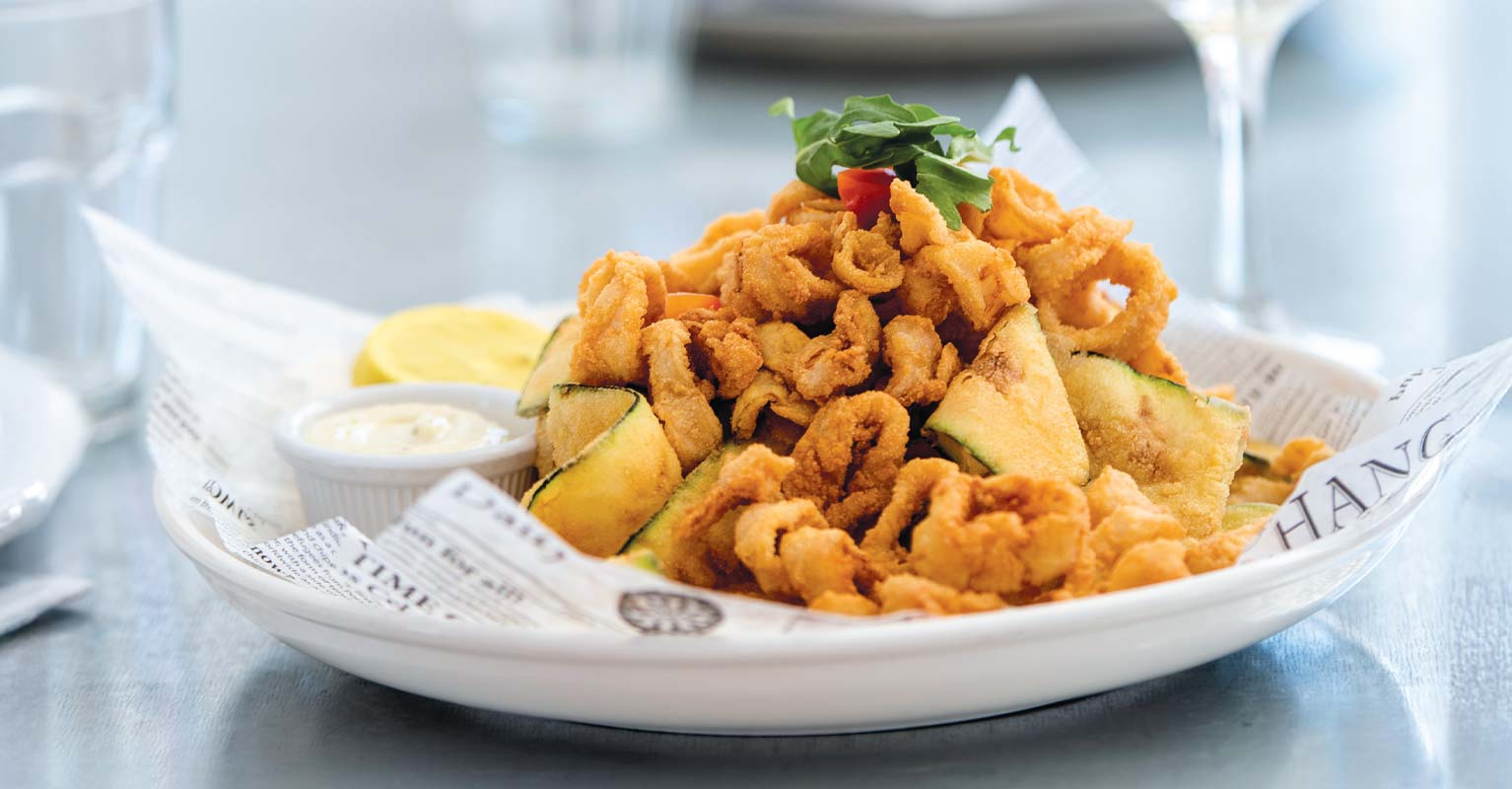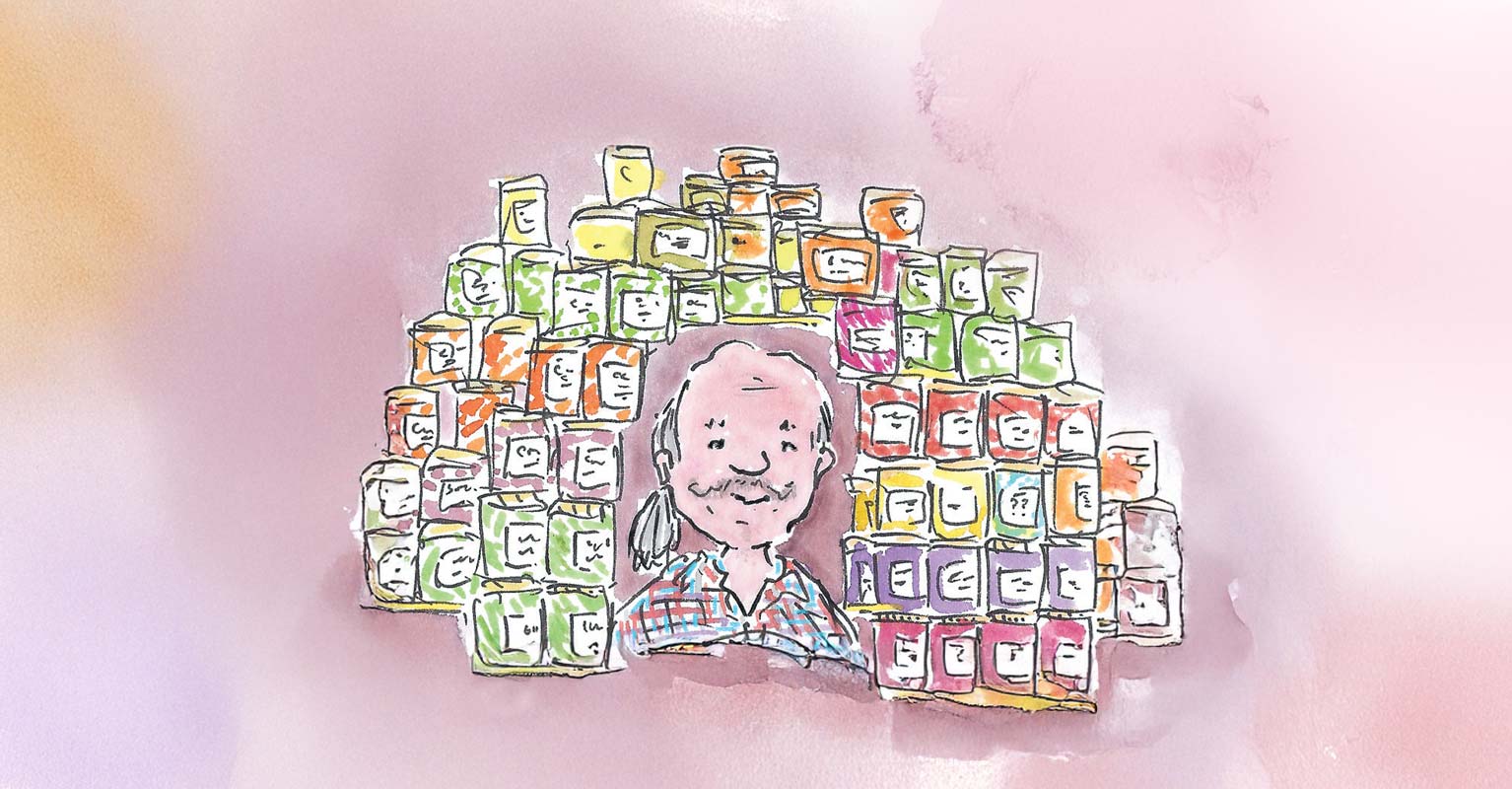As important crop pollinators and with their contribution of $18 billion to the U.S. economy, the importance of honey bees cannot be overstated. Photo by Kelly Gorham courtesy of MSU.
From honey production to crop pollination, Montana honey bees are agricultural powerhouses
Beekeeping and the purposeful production of honey dates back to at least 7000 BC. Cave paintings in Spain depict the earliest known record of wild honey foraging, and ancient Egyptians used honey as a sweetener, a gift to their gods, and even as an ingredient in embalming fluid. The Greeks viewed honey not only as a luxury food, but as healing medicine, and records show that beekeeping flourished in ancient Rome, where honey was used extensively in cooking, as well as in place of gold to pay taxes.
Today, honey bees are just as important to our way of life as they were in ancient times. Nationwide, honey bees add about $18 billion to the United States economy annually through honey production and crop pollination, with honey bees pollinating at least one third of food crops produced every year. Without honey bees as pollinators, we would lose foods like avocados, almonds, and, yes, even coffee.
Montana consistently ranks among the top five states for honey production. Currently, there are 230 registered beekeepers in the state including hobbyists, commercial beekeepers, landowners, and pollinators. Honey production is not the only job of a Montana honey bee.
Honey Production
Honey bees forage for nectar and pollen within about a three-mile radius of their hives, depending on the time of year and type of forage, with each individual bee visiting on average 500–1,000 different flowers a day. The bees suck the nectar from flowers with their tongues, storing it in their honey stomachs. Meanwhile, pollen, honey bees’ main protein source, collects on their legs and bodies to be taken back to the hive. There, the bees pass the nectar around, breaking it down into natural sugars. Nectar is naturally high in water content, so the bees collectively flap their wings to dry it down until it has about 17 percent water content. The nectar then ripens into honey and is sealed in a cell with beeswax for storage to eat later. In its lifetime, each bee produces only about ¹/12 teaspoon of honey.
Throughout history, honey has been highly regarded for its medicinal properties, used to treat everything from sore throats to hay fever. Its antimicrobial properties have been used when antibiotics and antiseptics are not available, most often to heal cuts and wounds.
A lesser-known product of honey bees is propolis, also known as bee glue. A combination of beeswax, plant resins, and saliva, it’s used in the construction, maintenance, and defense of bee hives. A 2018 paper in the peer-reviewed journal Nutrients shows that while additional human studies are warranted, available data shows the antioxidant and anti-inflammatory activity of propolis, which supports a reduction in various chronic diseases including heart disease, diabetes, hypertension, and neuronal degenerative disease.
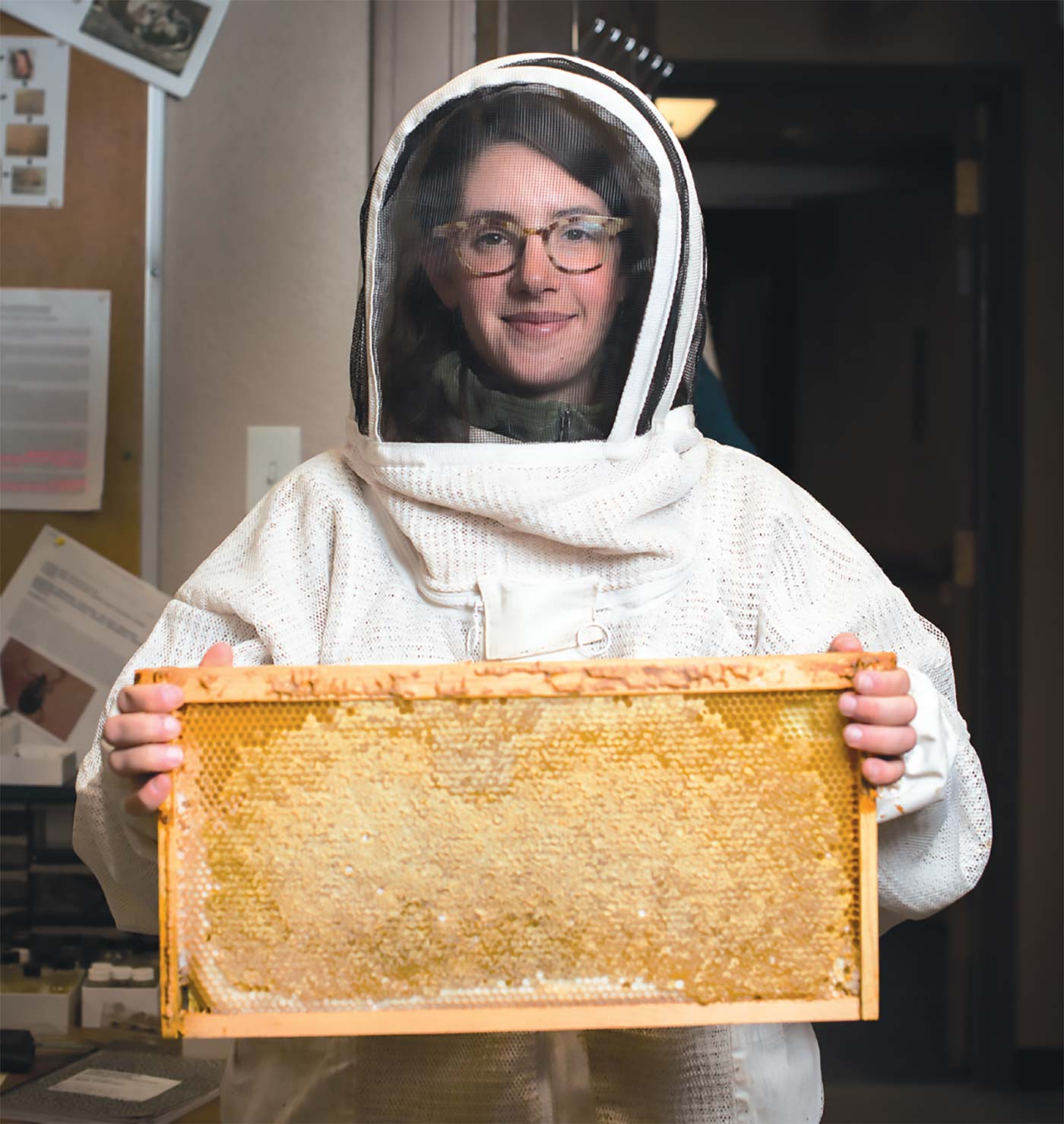
Working Double Time
“Honey bees in Montana are working overtime,” says Alyssa Piccolomini, entomologist for the Montana Department of Agriculture. Around 90 percent of honey bees in the state are transported to the West Coast each winter for the largest pollination event in the world, the California almond bloom. There, they pollinate almond groves during California’s short blooming season, and then return to Montana where they recoup with cooler nights and long summer days while producing honey. “Imagine driving straight from Bozeman to California, without so much as a pit stop, and then getting out of the car and going straight to work for several months,” Piccolomini says.
Piccolomini spends her summers in a bee suit, inspecting honey bee colony health in Montana and obtaining samples for national studies. Most of the bees she inspects are managed by commercial beekeepers, many of whom transport their bees across the country each year. She says 420 colonies— approximately 12.6 million individual honey bees—fit on each semi-truck.
The Treasure State has about 270,000 registered colonies and in 2019 these hives produced approximately 14 million pounds of honey.
“Montana is great for bees because we have a lot of open spaces, a radius law that prevents too much overlap in bee colonies, and a diverse landscape with a lot of open water sources, diversity in wildflowers, and crops for forage,” Piccolomini says.
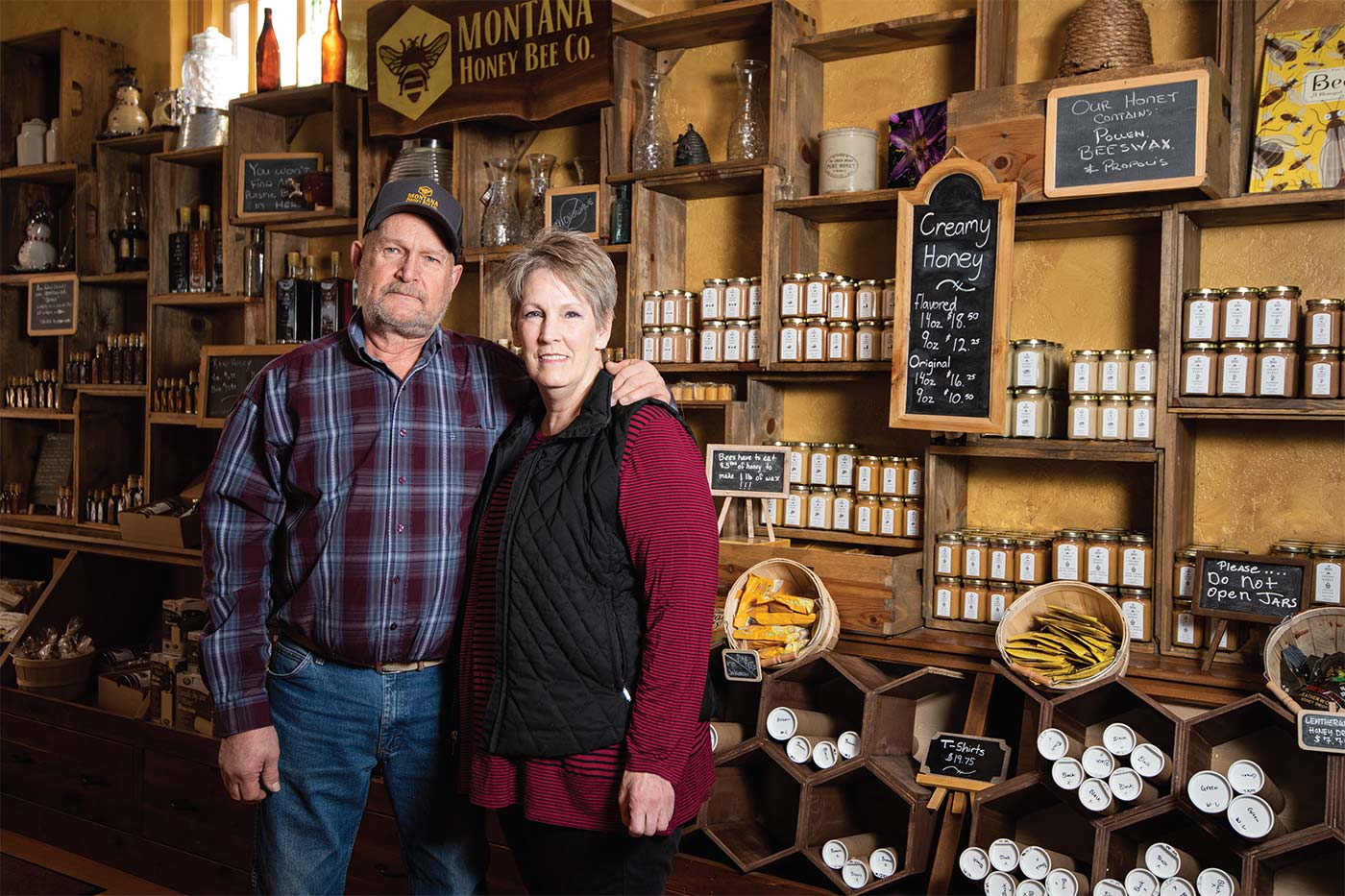
The Buzz Around Beekeeping
Steve and Joyce Thorson opened Montana Honey Bee Co. in downtown Bozeman five years ago. “We both have backgrounds in agriculture,” Steve says, “but we never considered raising bees.” That is, until 2008, when the couple was looking for an alternative to white sugar for baking. After transitioning to honey, but having trouble sourcing it locally in its raw form, they took matters into their own hands.
“There were not many resources at the time to show us how it’s done, but after researching for about a year, we ordered our first shipment of bees,” he says. “They arrived via UPS from California.”
Steve built their first hive himself, and the Thorsons learned all there is to know about beekeeping and honey production, eventually opening Montana Honey Bee Co., where they sell raw honey and beekeeping equipment, and teach classes on beekeeping to at least one hundred people each year.
The Thorsons were ahead of the curve when they started out. At the time, few people in the Northwest were keeping their own honey bees and also producing honey for local consumption.
Today, there are an overwhelming number of honey products on grocery store shelves, many of them claiming to be local or organic, but Steve says most of that is marketing. Lax labeling laws that don’t require ingredient listings on honey containers make it more difficult for consumers to know if the honey is cut with other substances, like corn syrup, so Steve says to buy as local and close to the source as possible.
“All raw honey crystallizes,” Steve explains. “Anytime you see honey on the shelves that looks totally pure, without imperfections, it is very likely that it has been pasteurized, which kills all the good stuff, or it has been overly filtered.”
The Thorsons do not transport their bees to California in the winter for the pollination event, and they say Montana winters can be a hard time for bees. “Our bees [totaling about 20,000] require about 100 pounds of honey to eat to keep them healthy through the winter,” Steve says. “But the last few winters here have been more problematic because they’ve been mild; the bees are more active and need even more to eat to get them through, and there is no food available in nature that time of year.”
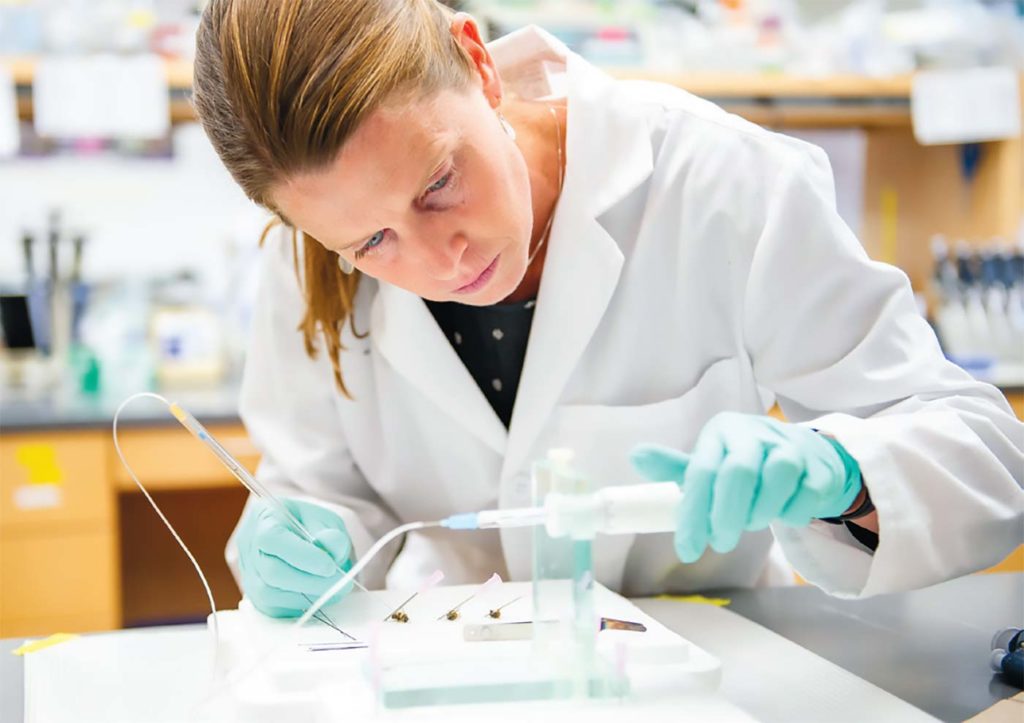
Honey Bees and Viruses
Michelle Flenniken is a co-director of MSU’s Pollinator Research Center and an associate professor of plant sciences and plant pathology. Flenniken says understanding how the honey bee immune system works might someday lead to strategies that reduce honey bee colony deaths due to viruses and other pathogens.
Honey bees in Montana and across the country have been consistently taking a hit, with colony losses of around 38 percent annually. Flenniken works with graduate students and other researchers in collaboration with Montana-based commercial beekeeping operations to monitor pathogen levels in colonies over time. They use molecular techniques similar to the process of detecting the COVID virus in humans in order to identify viruses and other pathogens in honey bee samples.
To investigate honey bee antiviral defense mechanisms, researchers in the Flenniken lab carry out laboratory-based experiments that involve injecting bees with known quantities of virus. For these studies, bees are temporarily immobilized with a 15-minute stay in a refrigerator. Flenniken then injects the chilled bees with a dose of virus using a tiny needle. Bees are monitored and sampled for the duration of the experiments, during which time they live in a modified deli container in the lab—kind of like a bee-sized “apartment.” Samples are analyzed over the course of infection to determine which bee genes are activated during virus infection. This information helps researchers understand which viruses the honey bees have natural immune responses for, and which genes determine those responses.
Flenniken found her path to honey bees through the medical field—her doctoral work involved studying the optimization of virus shells in relation to delivering anticancer agents. She was working as a postdoctoral fellow at the University of California San Francisco in 2008 when the first reports of mass honey bee colony losses were reported in the U.S., including in California. At that time, she wondered if viruses could be involved in those deaths, and she has been thinking about how viruses affect bees ever since.
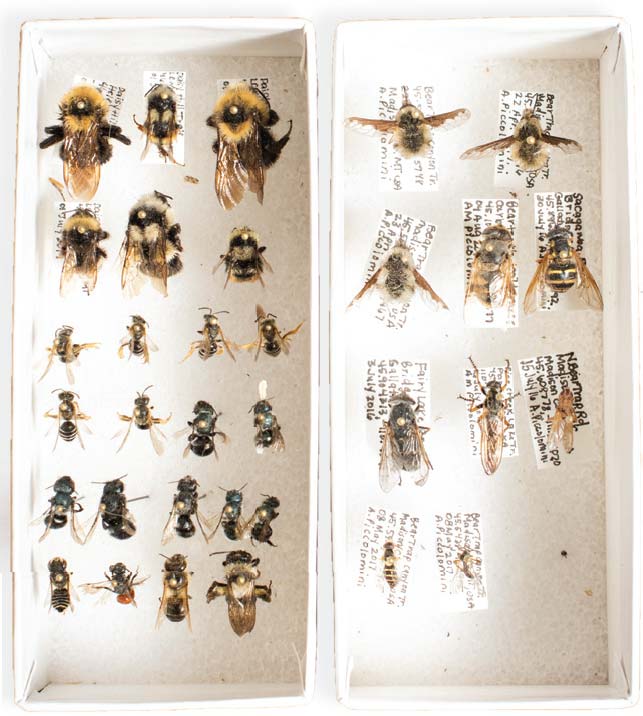
“At the time I had no experience with bees, but I liked the idea of studying honey bees instead of humans because honey bees are important to both environmental health and human health,” she says. “Honey bees also serve as a great platform for discussing many other science-based issues.”
There are thousands of species of native bees, all of which play a vital role in the ecosystem. The importance of honey bees in our agriculture system and ecosystem cannot be overstated, and bees are at the forefront of many environmental issues including climate change, loss of forage due to monoculture practices, and exposure to pesticides and chemicals.
“The best thing the public can do to protect bees and for their own health is to plant flowers for bees, minimize the use of agrochemicals in their yards, and to buy local honey,” Flenniken says.
From pollination to honey production, honey bees provide immense monetary value and environmental services to the Treasure State. There are many ways the public can help sustain the health and future of honey bees, like supporting further research; abstaining from the use of pesticides, herbicides, and other chemicals; keeping green spaces untamed and natural; and by buying local honey close to the source.


